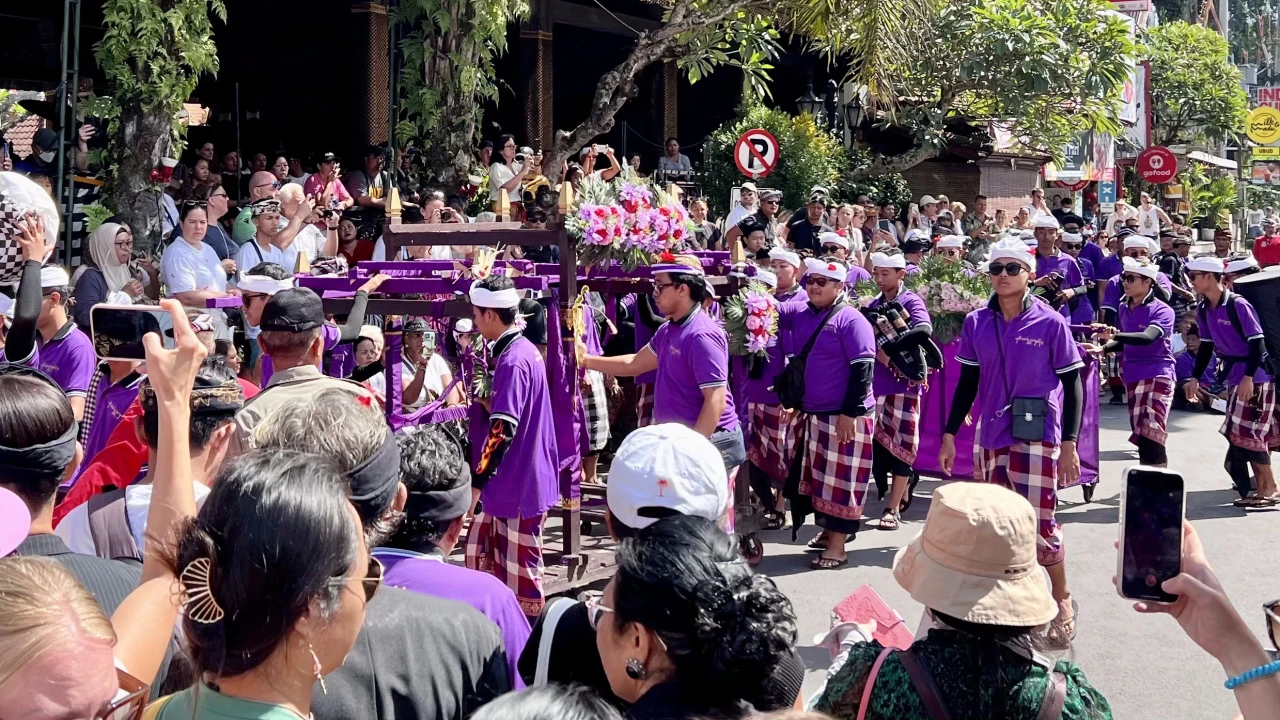
What holiday is today? This question was on the minds of everyone who found themselves in Ubud on April 14, 2024. And no wonder – dressed-up locals from all sides converge on the main square, where not long ago they celebrated Balinese New Year. Traditional instruments sound, musicians put on shows with masks and loud cheers. People smile and take photos of children against the backdrop of colorful statues resembling bulls.
What is this? A carnival? City day? Or maybe an island day, judging by the scale? No. This is how funerals are held in Bali. And the colorful bull figures – essentially, coffins. Or rather, sarcophagi, into which the deceased will be placed, and then they will be burned right in these figures.
Although, they are not even bodies, they are the remains of the deceased. After all, they have been awaiting cremation for quite some time.
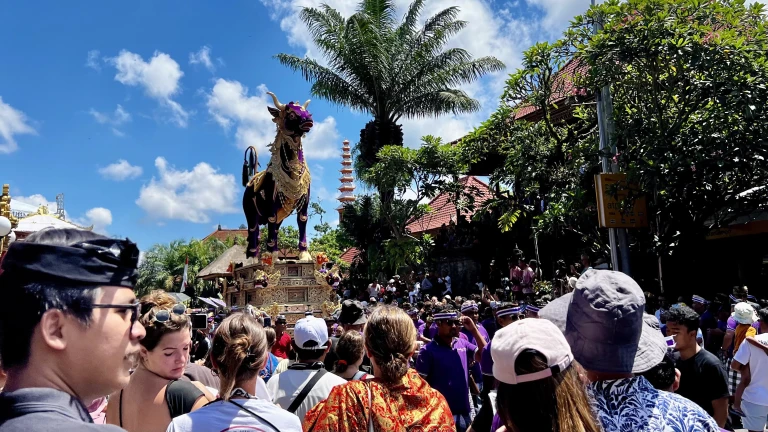
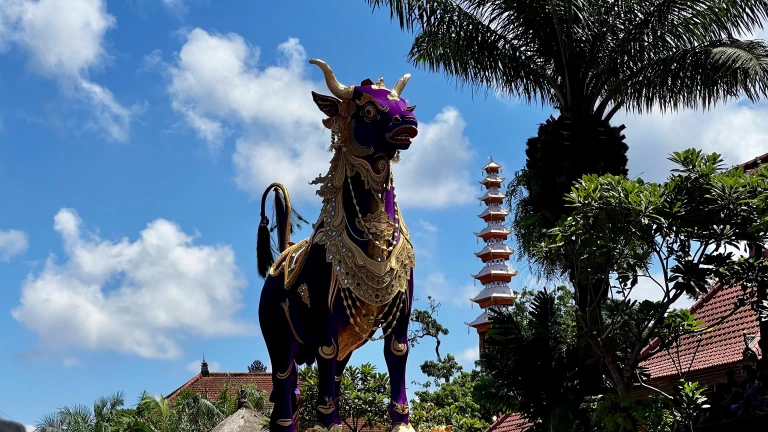
The large purple bull is a sarcophagus for the eldest son of the king of Ubud. His name was Cokorda Bagus Santaka. During his lifetime, he worked hard to preserve traditions in Ubud and enjoyed great respect from traditional leaders and indigenous residents.
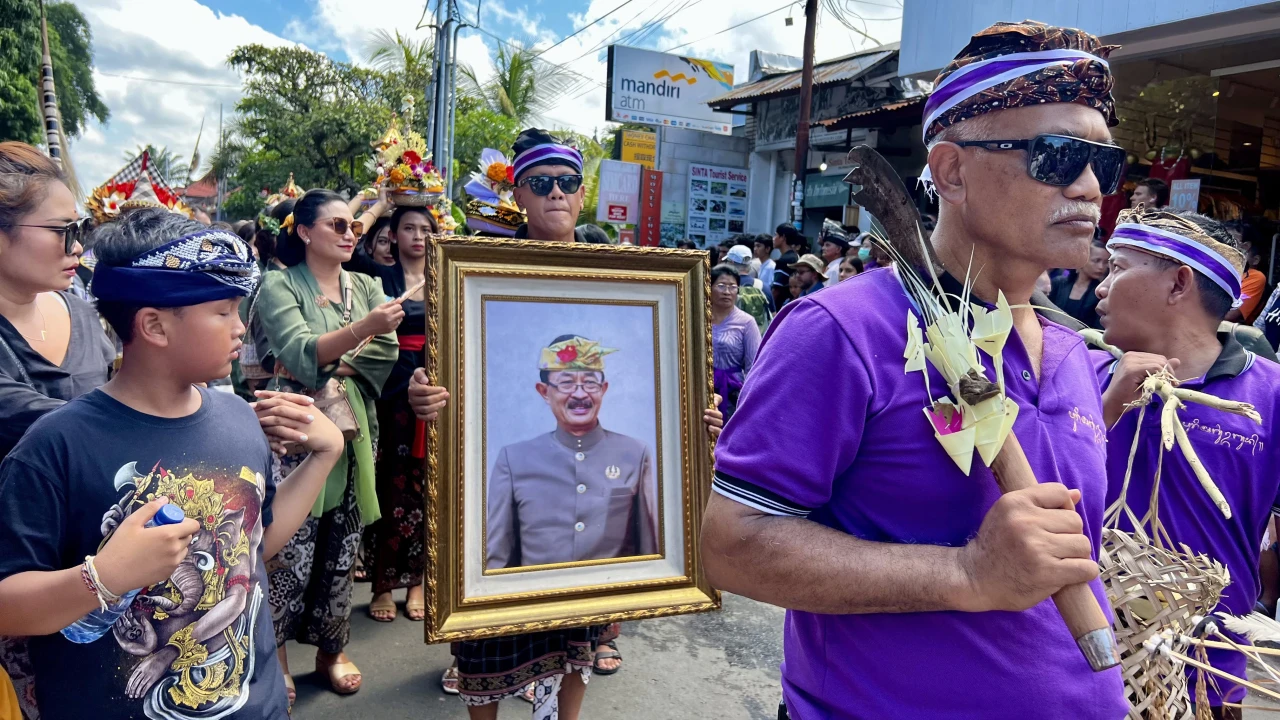
According to his younger brother, despite his high status, Cokorda Bagus Santaka lived a modest life and died at the age of 64 from illness. This happened on February 1, 2024, but it was impossible to hold the funeral before April 14. After all, according to the Balinese calendar, only special days are suitable for such ceremonies.

The remains of the second family member (for whom a smaller sarcophagus stood in the square) awaited cremation even longer – he passed away more than a year ago. Before the farewell ceremony, the body lay in the grave.
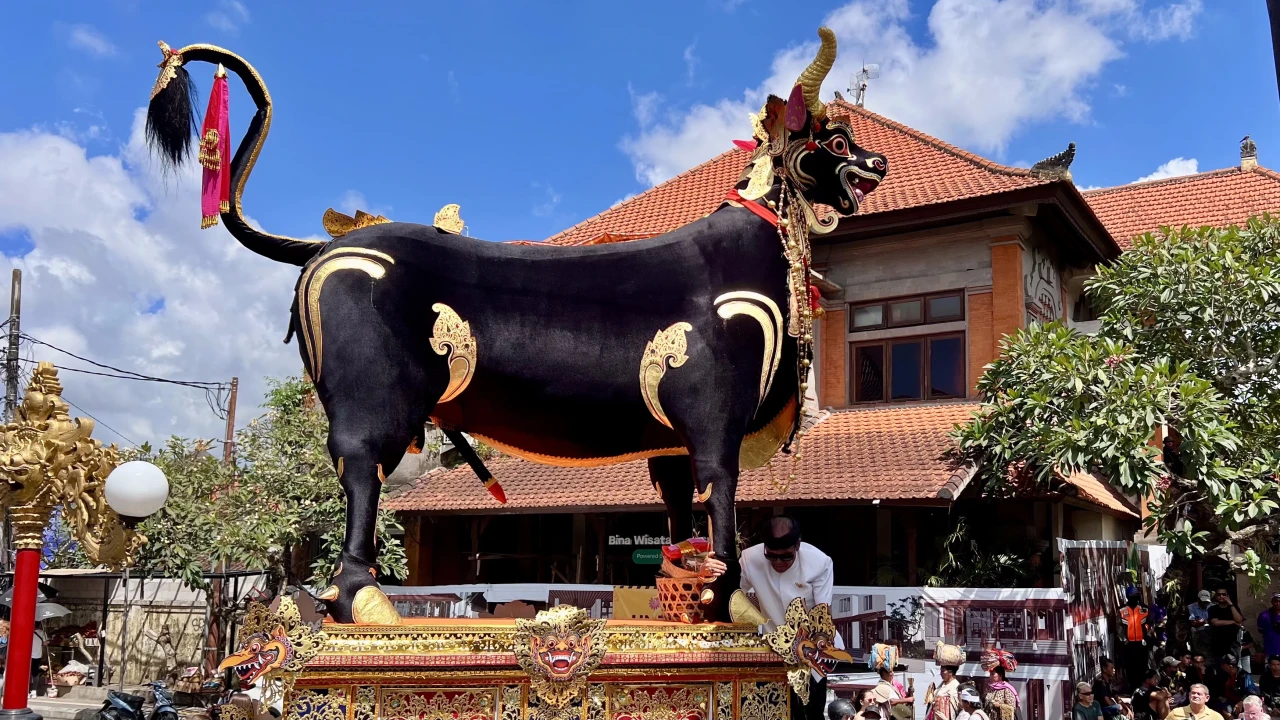
But let's return to the main character of this day – the son of the king of Ubud, Cokorda Bagus Santaka. The decision to make his sarcophagus purple was made by his younger brother. And he had several reasons for this immediately. Firstly, it was the deceased's favorite color since childhood. Secondly, the deceased was considered an indigo person, that is, a prophet, a herald of a new era, and the indigo color is close to purple. Thirdly, this color in Bali symbolizes awakening and strength. Therefore, the sarcophagus by its appearance alone should support the deceased's family.
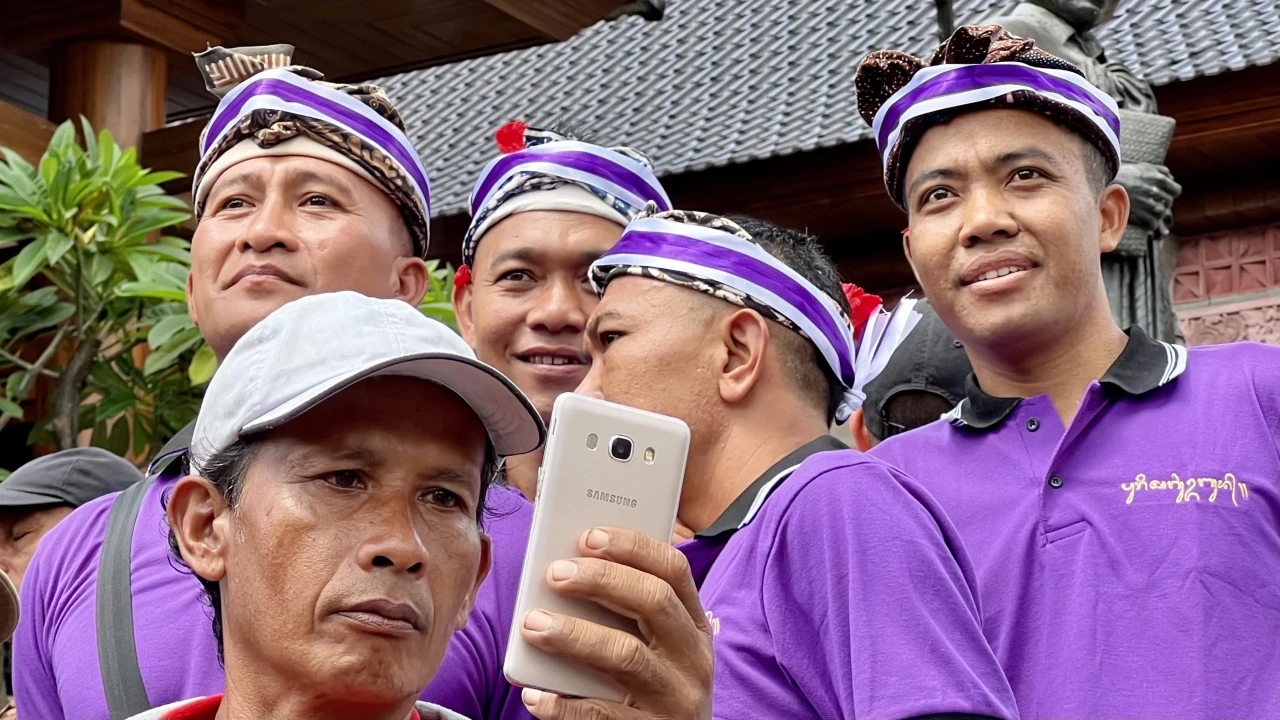
According to the approximate estimates of the local media, around 4000 people came to say goodbye to this respected individual. And it's easy to believe. Despite the fact that the funeral procession usually starts towards the cremation temple around noon, people began to gather in the main square early in the morning.
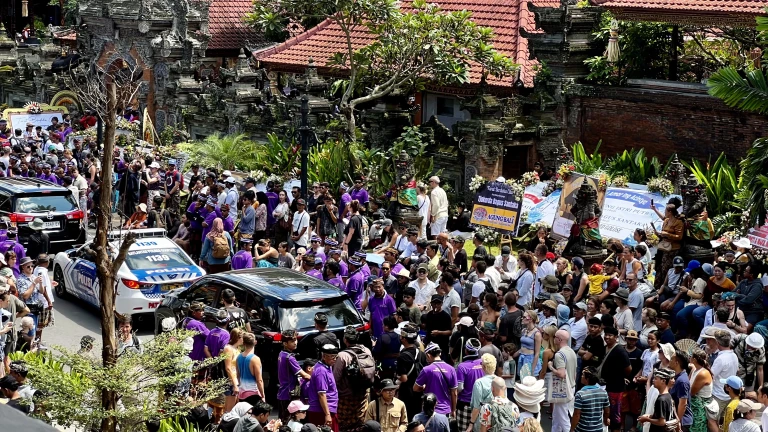
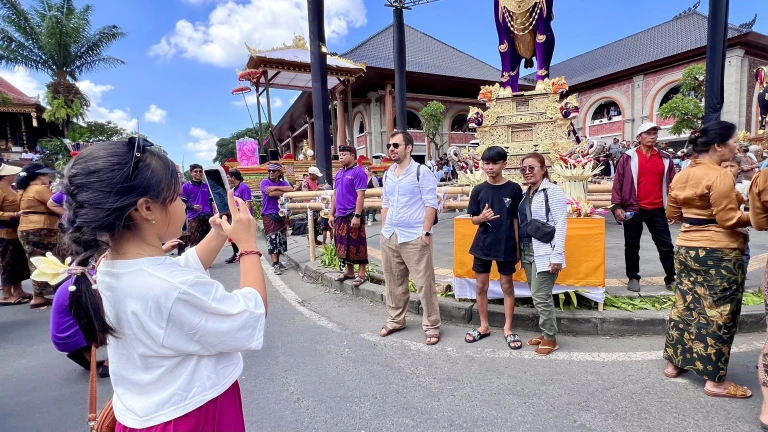
And not in vain. The earlier you come, the more chances you have to examine the sarcophagi and the cremation tower in detail, and, of course, take photos with them for memory. Locals love this very much.
Moreover, closer to lunchtime on a sunny day, it becomes unbearably hot.
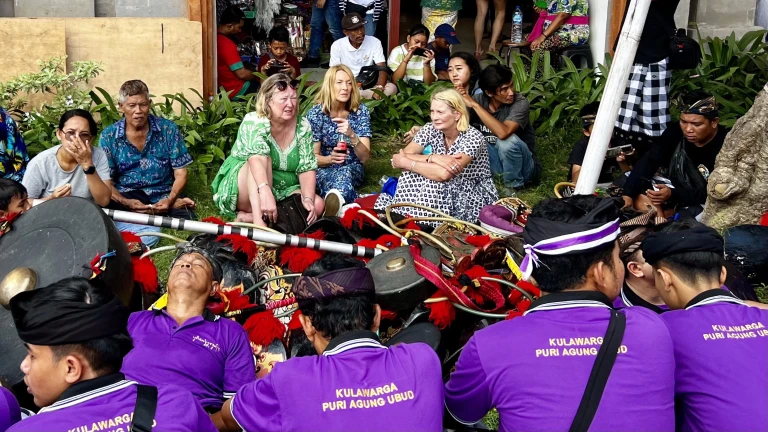
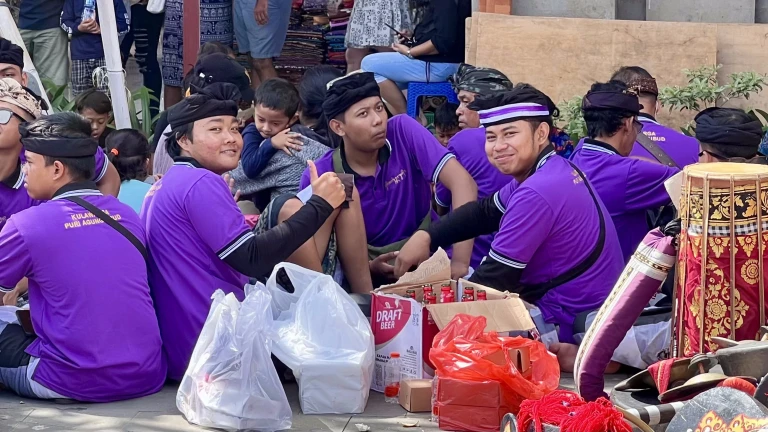
If you are a tourist and attend such a ceremony, be prepared to fend off sarong vendors. They will grab your hands and persuade you that you should wear religious attire as a sign of respect for the deceased. You can understand them, but they are still being deceitful. If you are not going to the temple, then you don't need a sarong.
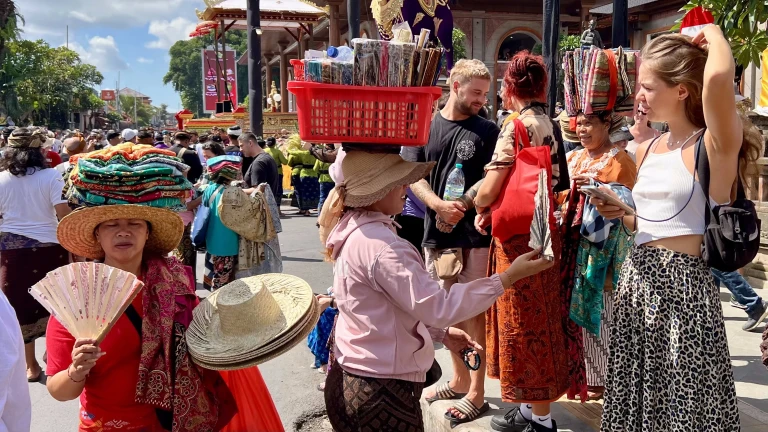
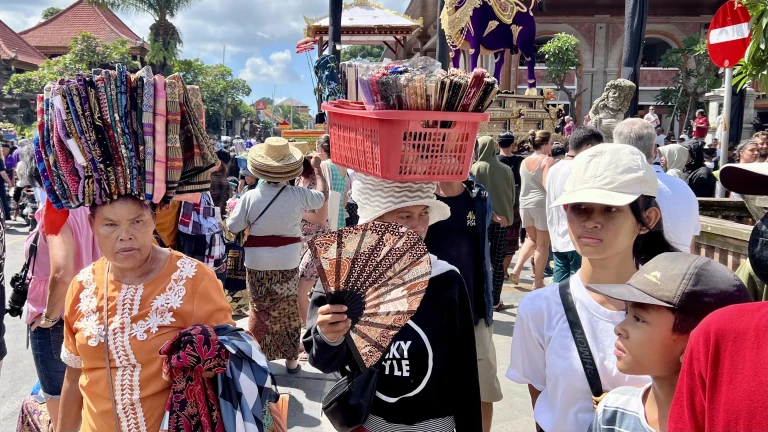
It's better to take care of what will help protect you from the sun, or rain if the day is cloudy. For example, this woman has prepared to the maximum.

And vendors of snacks and drinks in such a crowd and heat are the most anticipated. It's as if they don't even significantly inflate prices for foreigners.
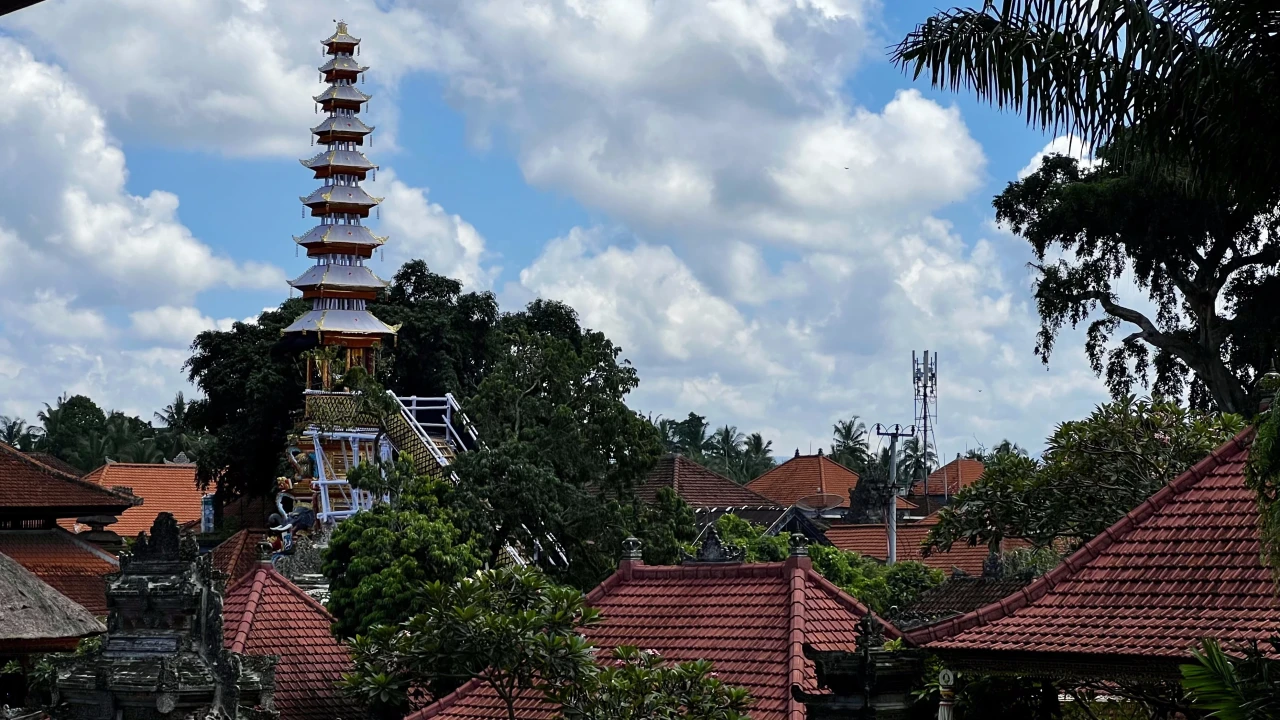
In addition to the sarcophagi, the center of attention is the 25-meter cremation tower. It was built for transporting the body to the temple. You don't often encounter one this tall – only for members of the royal family. The lower a person's status, the lower the tower will be. Approaching it is not as easy as approaching the bull figures – the area is fenced off, and prayers are held there from early morning.
Only after all the preparatory rituals are completed, a group of 7 people climbs the ladder to the top of the tower to place the body there.
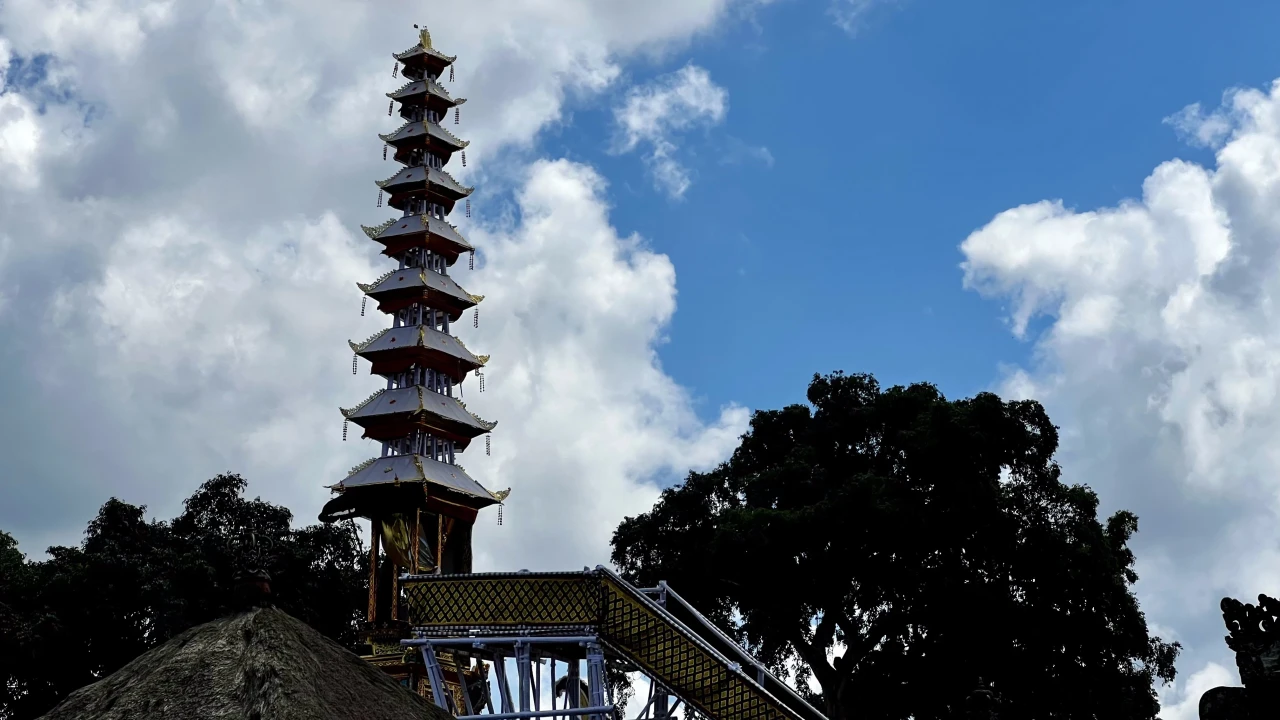
The tower weighs about 5 tons, but there are no wheels at its base. It can only be transported manually. Can you imagine the responsibility on the carriers? One awkward movement, a misstep, and the tower could easily wobble, and... let's not even go there.

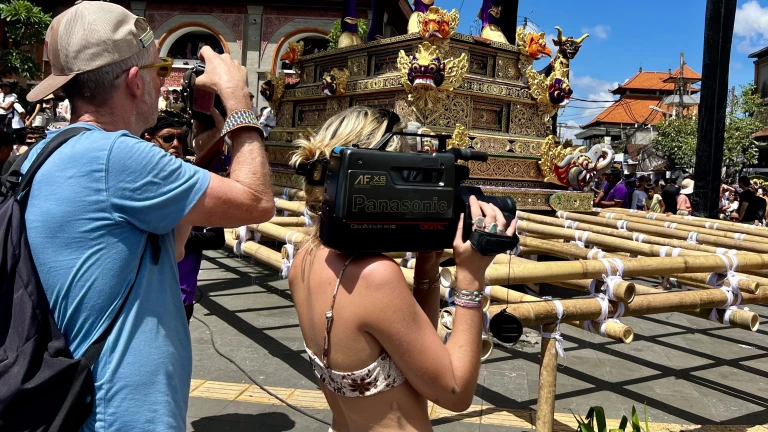
Those who arrived at the main square of Ubud in the morning waited for the start of the ceremony for about 5-6 hours because the procession only began moving closer to 12:00. But at this moment, the celebration became even brighter - there were many more people, and each movement of the participants in the funeral procession was greeted with joyful shouts.
Only the man with the ladder seemed to be even happier as he climbed the poles and removed wires as the procession passed by (yes, that's probably why you didn't have electricity).
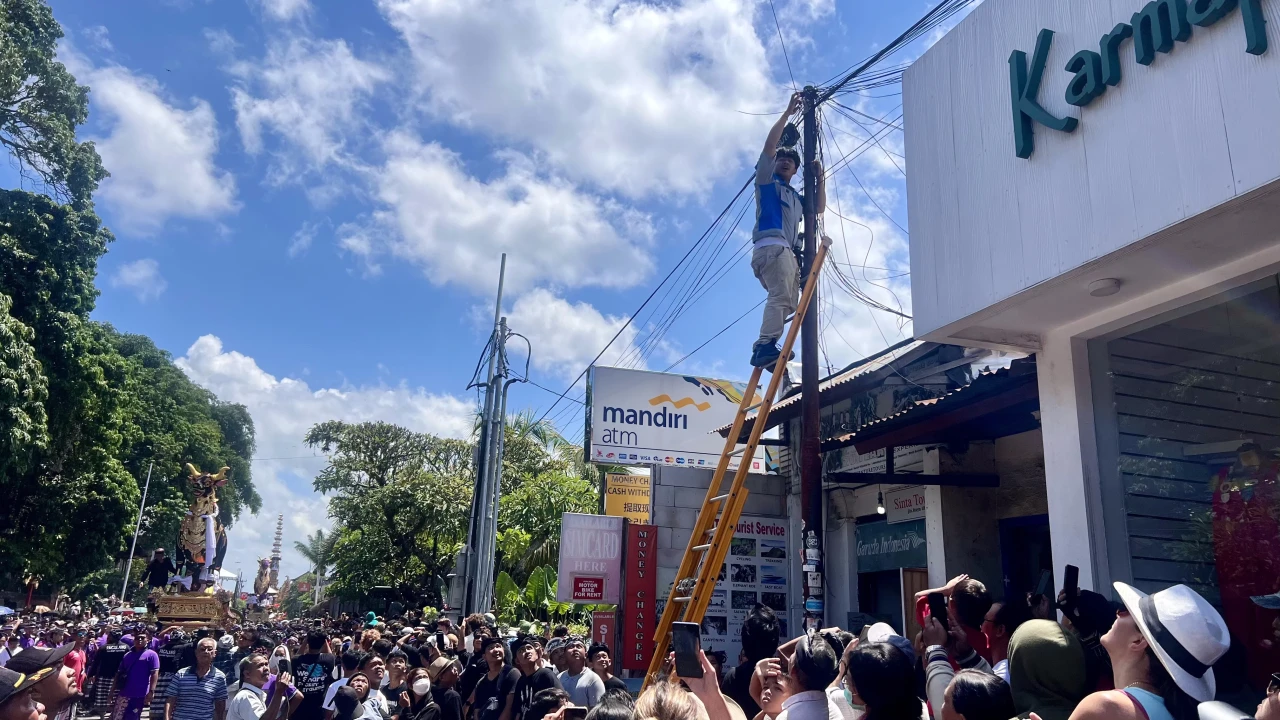
Another interesting detail is the fire truck leading the procession. It's also the main attraction for local boys. Partly because they can climb onto the roof (the rescuers turned a blind eye to this), and partly because the firefighters' task at this event is to spray water, apparently cooling down the asphalt a bit.
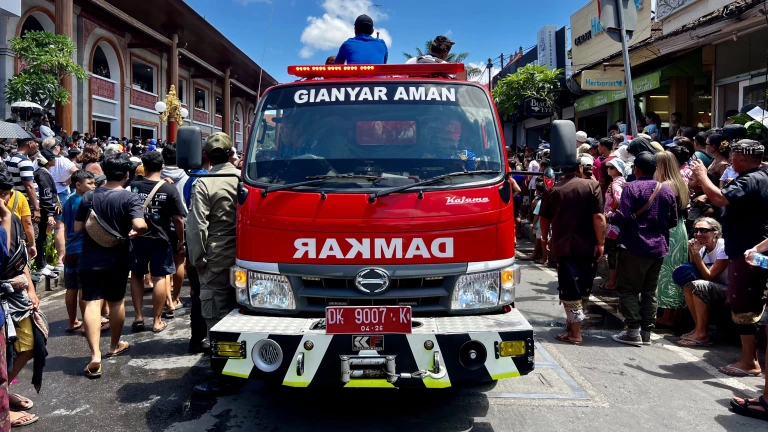
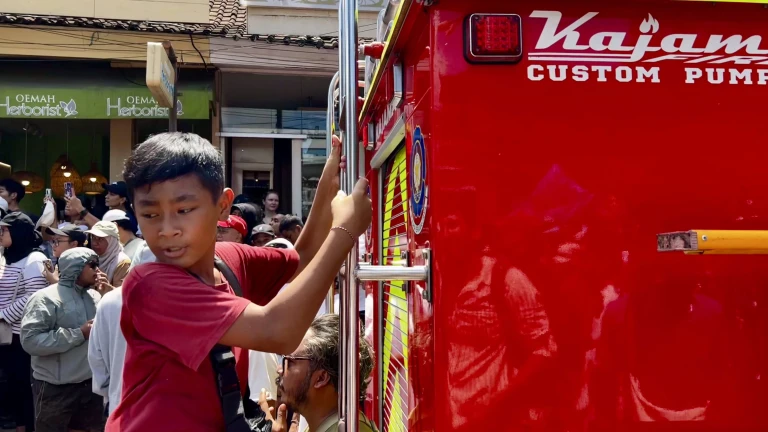
The route of the funeral procession is short - just a kilometer to the temple where the cremation takes place, but they don't move quickly, so you'll have time to examine everything in detail and even wink at the princess. The girls being carried by the participants of the ceremony are also members of the royal family.
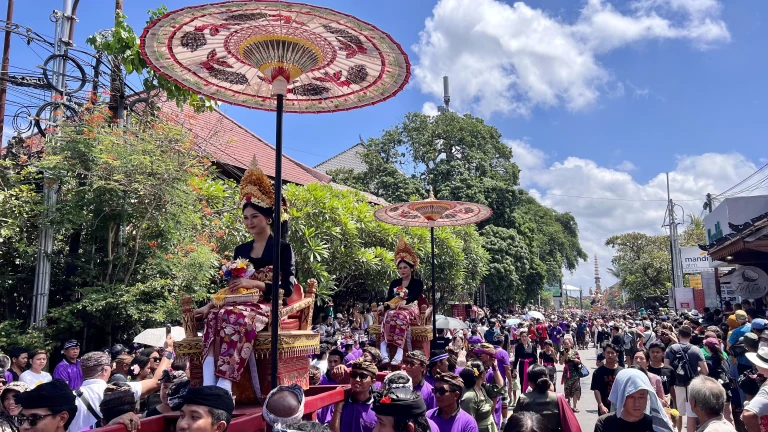
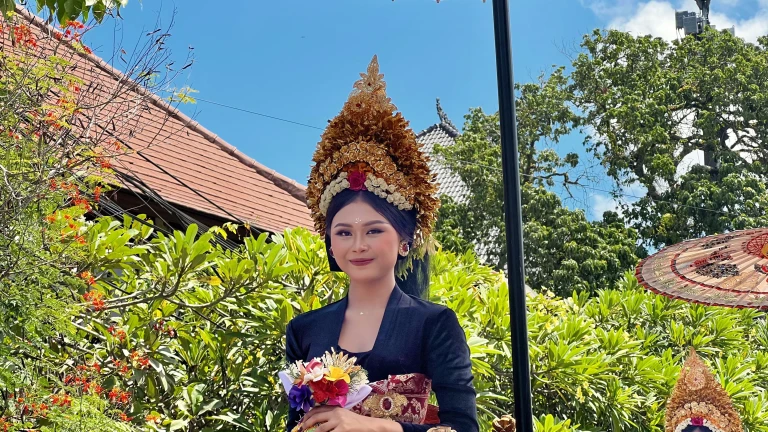
However, it's quite difficult to walk along with the procession - there are so many people who want to do it that you probably won't even be able to move from where you were standing at the start.
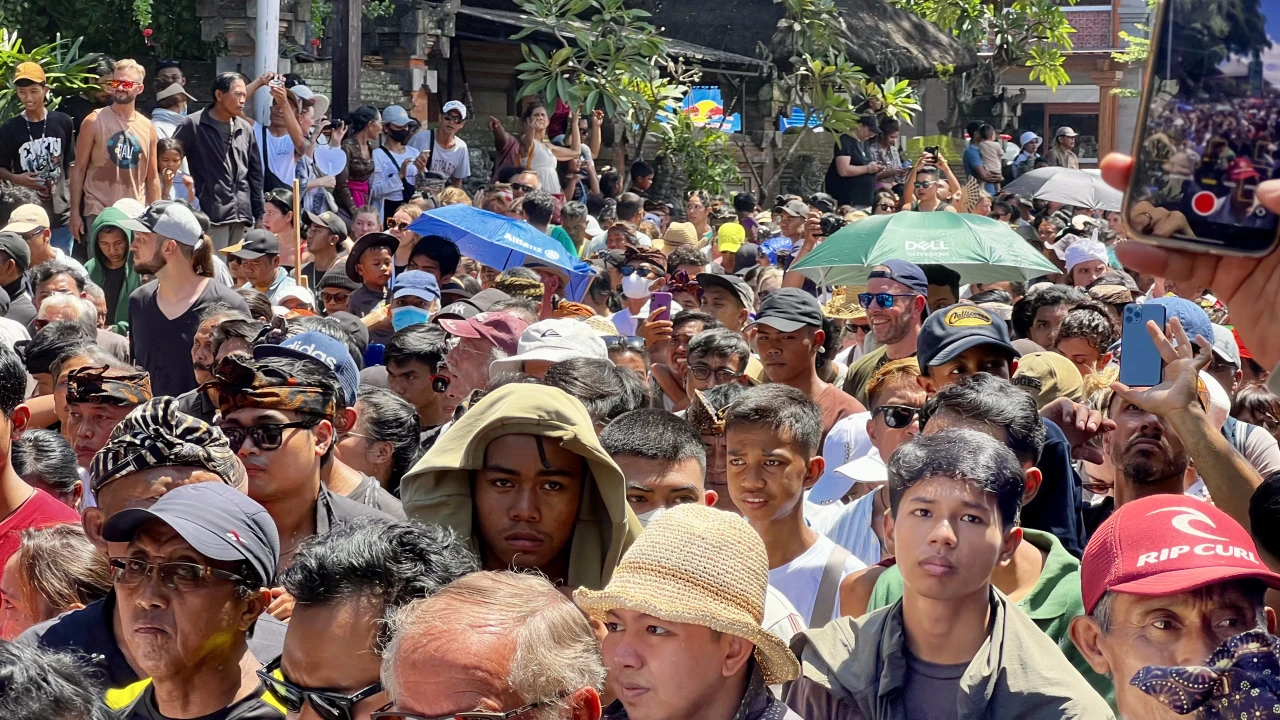
A pleasant bonus is that the shops and restaurants along the road are open on this day, so you can cool off under the air conditioning and have a cold coconut drink. Or you can stay there afterward, wait until everyone disperses, and the roads become freer.
The culmination of the ceremony is the burning of the sarcophagi. The fire is usually lit by a priest. If previously firewood was used to kindle the ritual fire, now gas burners come to the rescue.
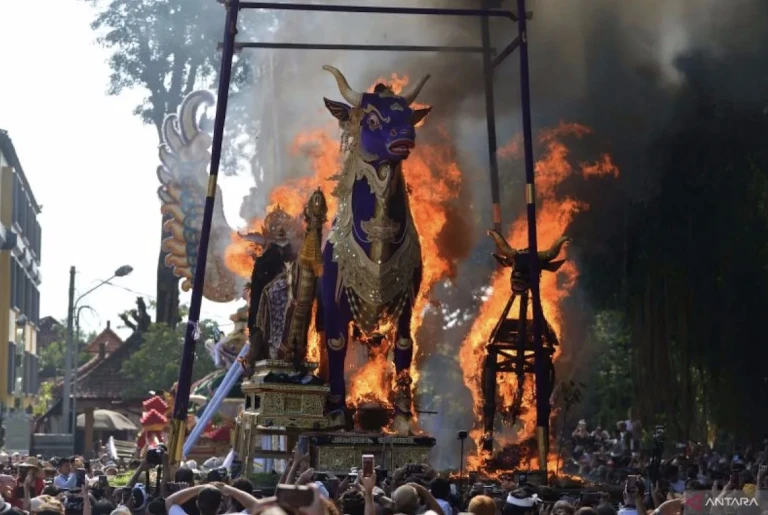
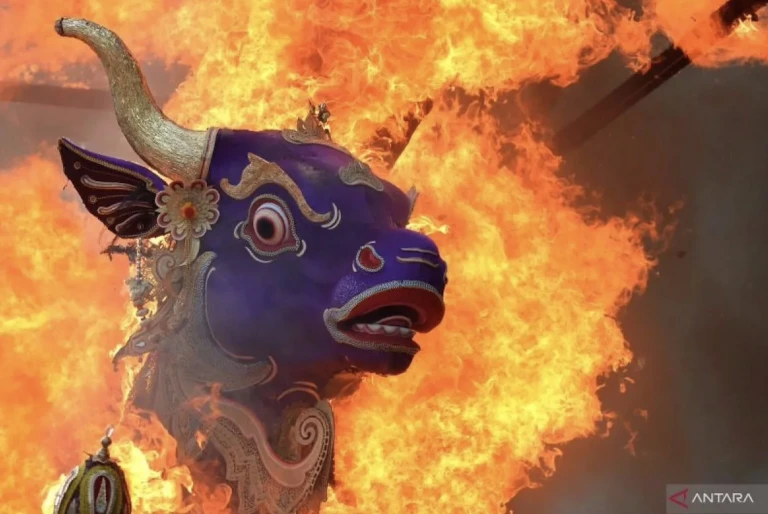
By the way, the cremation tower and all the other structures involved in the ritual are also burned. But separately.
As for the ashes of the deceased, after the ceremony, they are sprinkled with holy water and placed in a ceremonial yellow coconut. About 12 days later, it will be taken out to the open sea or lowered into a river so that the soul, having passed through all the stages of post-mortem purification, can ascend to heaven.
For the family, the ceremony doesn't end there. They still have to pray and make offerings to the gods as a sign of gratitude for the ceremony going smoothly.
You can add one right now!